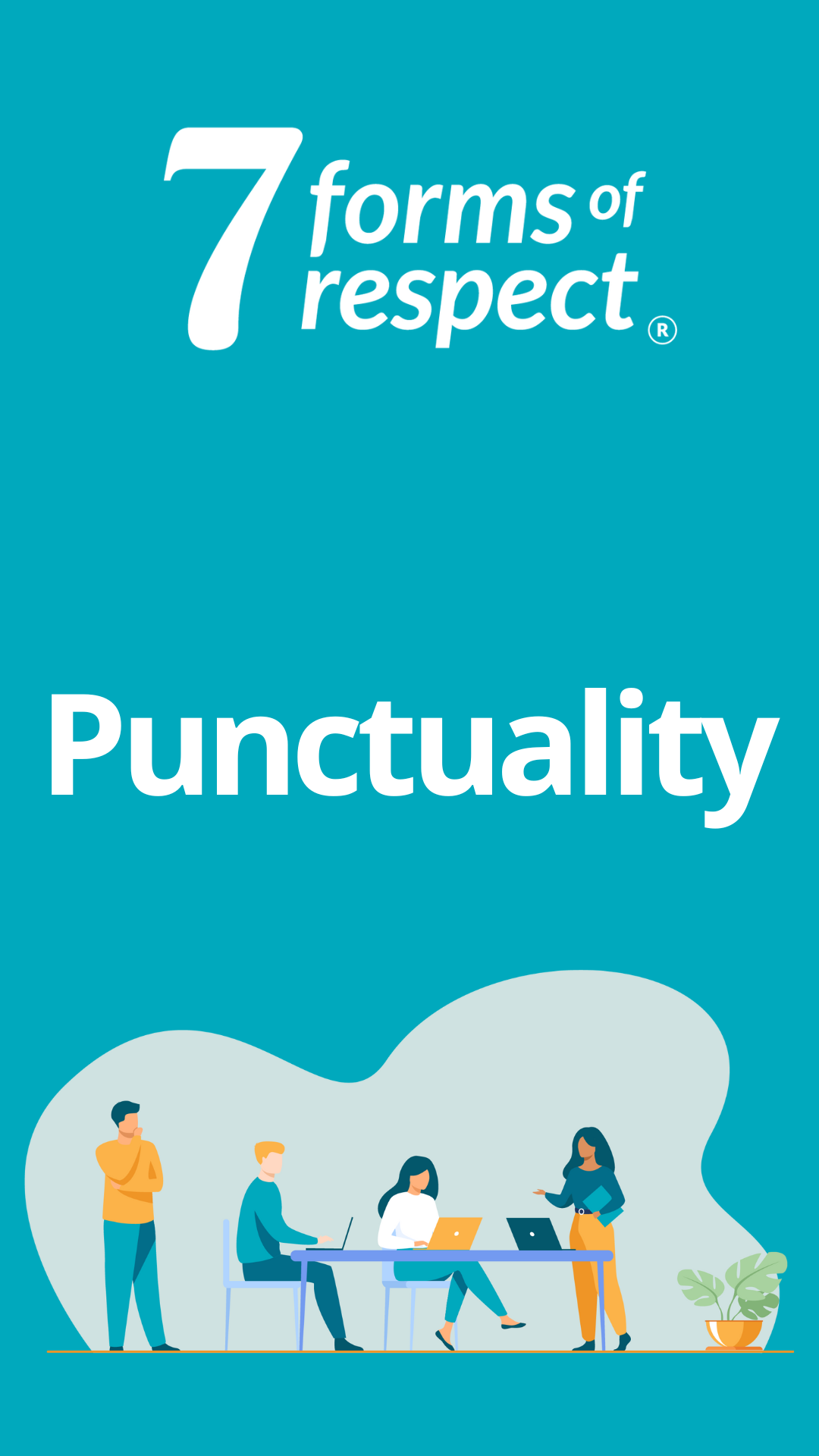
The 7 Forms of Respect (7 FoR).™ tool builds mutual trust and understanding by giving people a vocabulary to describe what matters to themselves and others. Respect is relative. What is important to one person might not be important to someone else.
In this post, we will be going in-depth on “Candor” as a form of respect. The 7 FoR include: procedure, punctuality, information, candor, consideration, acknowledgement and attention. Candor focuses on asking probing questions, offering constructive feedback (both solicited and unsolicited), bringing up opposing viewpoints, and pointing out mistakes and errors.
How Candor shows up in everyday life
Imagine you are in a meeting to review a colleague’s project. You both report to the same manager. Your colleague has just finished presenting. Your manager asks you specifically what you think about the presentation. You think there are some flaws in your colleague’s project execution. You know this particular colleague does not like constructive feedback.
Do you voice this constructive criticism openly at the meeting and respond to your manager?
If you choose to give feedback on-the-spot, you are giving respect in the form of Candor, which is what your manager wants but your colleague does not like.
Do you only express the positive aspects of your feedback? If you only give praise, you are showing respect in the form of Acknowledgment to your colleague and not giving respect to your manager in the way he asked for it.
Do you ask for more time to think about it and then share it with your manager later on, so your colleague doesn’t have to hear it? If you choose to defer, you are giving your colleague consideration because you are guessing they would prefer that, though you don’t know. You will still be able to give your manager Candor, though delayed.
This example illustrates the complexity and trade offs of giving respect to people with different preferences, at the same time. It shows the ways we want to get and give respect are not universal and can change depending on the individual’s preferences. The degree to which you expect this form of respect may depend on the power dynamics of your relationship.
Candor can look like:
- Asking probing questions
- Offering constructive feedback (both solicited and unsolicited)
- Bringing up opposing viewpoints
- Pointing out mistakes
Lack of Candor as a form of respect looks like:
- Withholding opinions that differ from the others, even when asked
- Withholding constructive criticism
How Candor can be interpreted differently
There are many different personal and professional reasons why someone would care about giving and/or getting Candor as a form of respect. Understanding your forms of respect starts with asking yourself, why does this matter to me? Many people in our research talked about their families and childhood. Others focused on the demands of their current job function and company culture.
The 7 FoR provide a shared language to describe what you need. You’ll be able to use this language to navigate conflict and address misunderstanding. This can come up when you want a particular FoR of respect and you aren’t getting it. You can then share why the FoR matters to you.
Scenario 1:
Kim is a high-performing employee who has been promoted three times in a year. Now she is meeting regularly with the CEO to discuss her work. The CEO likes to adopt the opposing viewpoint to challenge her work, in order to push her thinking. Kim has always appreciated getting Candor as a form of respect. This constant Devil’s Advocate makes her feel anxious. After a month of interrogation meetings with the CEO, she begins to doubt if she wants to stay at the company. Because she knows the CEO appreciates getting Candor, she tells him of her concerns, “I know this is the way you like to give Candor and it makes me feel like I constantly have to prove myself and how much I know.” The CEO was very surprised. “I grew up with lawyers for parents and we constantly debated. No one has ever told me this before, I wonder how many other people I made feel uncomfortable. Thank you for your Candor. I won’t probe in that way anymore and I’ll stick to direct feedback.” Because Kim gave the CEO Candor about his Candor, he was able to adjust how he gave Candor.
Scenario 2:
Travis has been passed over for a promotion twice. He has asked for feedback on his performance so he knows what to do to improve his work so that he can get promoted. His manager instead tells him he’s doing really well. He even gets an employee recognition award. But this award feels empty because he hasn’t gotten a title promotion nor a pay raise. He finally tells his manager he feels disrespected. He wants to get Candor from her and she gives him Acknowledgement instead. Once he frames it that way, she realizes she does not like to give Candor as a form of Respect because she doesn’t know how to tell Travis about the areas he needs to improve, though she is aware of them. She herself did not have managers who modelled giving constructive feedback effectively. She hadn’t realized her own preferences were hindering his ability to prove he was ready for a promotion. He was not satisfied by just doing his current job well. She started to give him Candor so that he would feel respected,
Our preference for certain Forms of Respect are rooted in our past experiences. Explaining those experiences builds empathy with others. Whenever you work with someone who doesn’t share your same FoR , you can use FoR to talk about it. Ask them about their past experiences and who influenced them.
Candor is a form of respect that focuses on giving information meant to influence an outcome or encourage change.
What’s Next
Check out Dr. Julie Pham’s book, 7 Forms of Respect: A Guide to Transforming Your Communication and Relationships at Work.
To learn more, visit our website. The CuriosityBased staff are also available to hold workshops with your company or team to learn how to apply the 7 Forms of Respect to improve communication, collaboration and trust.
Is Candor a form of respect you value?
Take the free quiz here.








Leave a Reply